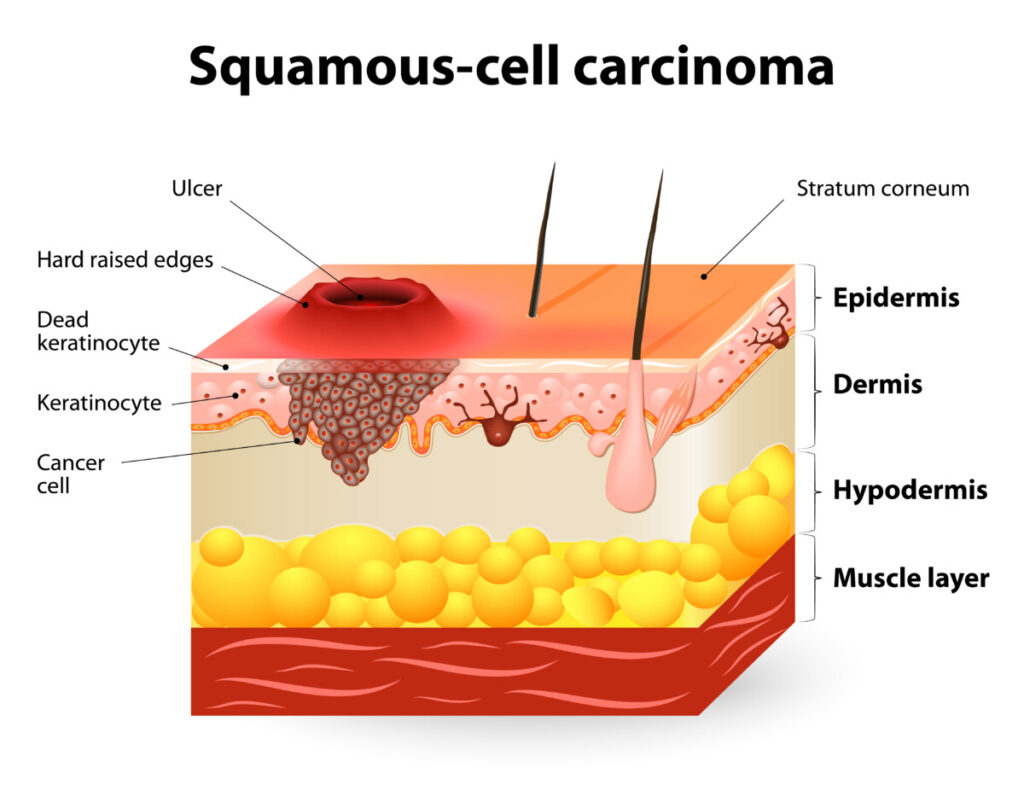
Squamous cell skin cancer (SCSC) generally arises from the cumulative lifetime ultraviolet (UV) exposure and damage to the skin. It is the second most common form of skin cancer diagnosed in Canada, behind basal cell carcinoma.
The top layer of skin, the epidermis, is predominantly composed of basal cells, squamous cells, and melanocytes. Squamous cells are thin, flat skin cells found in the upper section of the epidermis and appear at the skin’s surface. As part of normal skin maintenance, squamous cells are constantly shed as new cells replace older ones.
When squamous cells grow out of control and become cancerous, they develop into SCSC. This type of skin cancer generally grows slowly and occurs most often on sun-exposed skin, such as the back of the hands, ears, and scalp. It often looks like a sore that is not healing or an enlarging red, scaly patch of skin.
Nomenclature: Squamous cell skin cancer vs. cutaneous squamous cell carcinoma
On this website, we use the term squamous cell skin cancer (or the abbreviation SCSC) to clarify we are talking about squamous cell carcinoma as it occurs on the skin. Squamous cells line tissues inside and outside of the body, so squamous cell carcinomas can develop in other parts of the body, outside of the skin and unrelated to ultraviolet light exposure, including in the lung, anus, and mouth. You might also recognize the term cutaneous squamous cell carcinoma—another way of describing squamous cell skin cancer.

